5 Must-Have Features of an eCommerce Fashion Store That Are Often Missed
-
 Nidhi Arora
Nidhi Arora
- 4 years
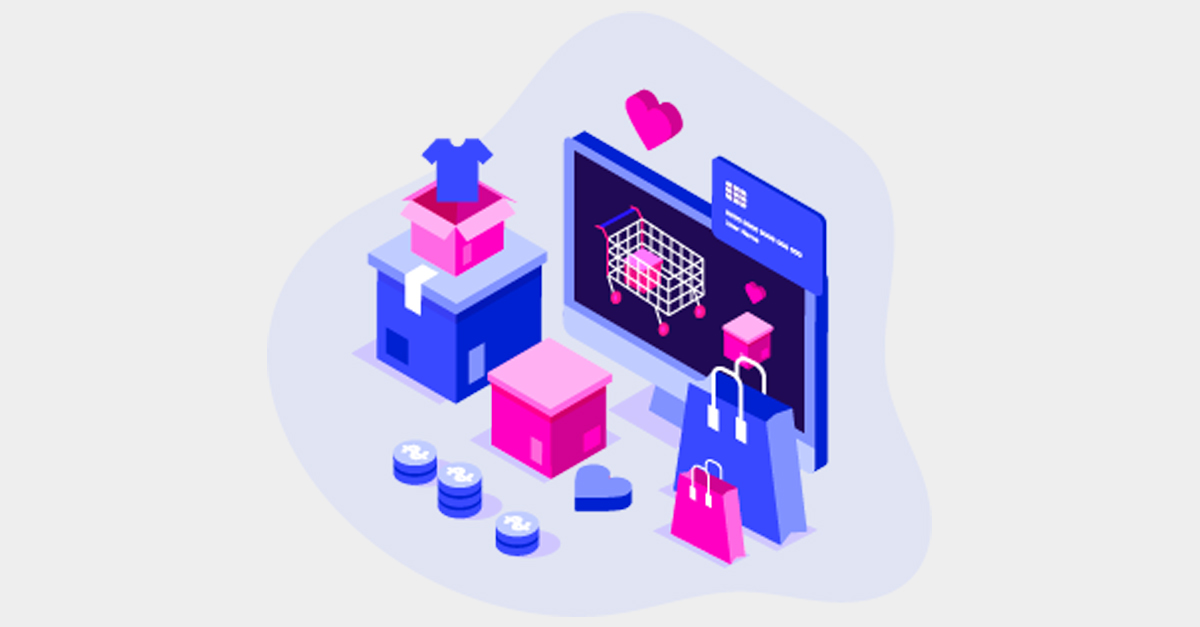
Fashion is the biggest B2C eCommerce market and it was worth $752.5 billion in 2020, as per Statista. The global eCommerce fashion industry is further expected to grow at a rate of 9.1% per year to reach a market size of $1.164,7 billion by the end of 2025.
It is clear from these numbers that fashion is one of the highly competitive industries in the eCommerce world. From big brands to homegrown startups, there is a lot of buzz around Fashion eCommerce and it looks like everyone is selling fashion online today – either using social media or through an eCommerce store.
But, what makes a fashion brand stand out in this highly competitive market?
Well, to sell anything online, you first need to develop a platform that offers a seamless experience with features and functionalities that compel people to visit your store and then turn them into your loyal customers. In this article, we will talk about five such features using which you can make a difference in the fashion eCommerce industry and generate millions in revenue.
So, let’s get started.
5 Features that Will Help You Standout in the Fashion eCommerce Market
1. Informative Product Detail Pages
When shopping for anything related to fashion, may it be clothes or jewelry, every customer is a bit choosy. It is hard for us to select a product without knowing all its details.
Similarly, the consumers of an online fashion store desire to know even the tiniest detail of the product before they make a purchase. That’s why it becomes essential for fashion retailers to create a product detail page for items they offer. To better understand the type of product pages you need to create, have a look at this page from Nike’s online store – an American fashion retail brand generating more than $44,538 billion in revenue every year.
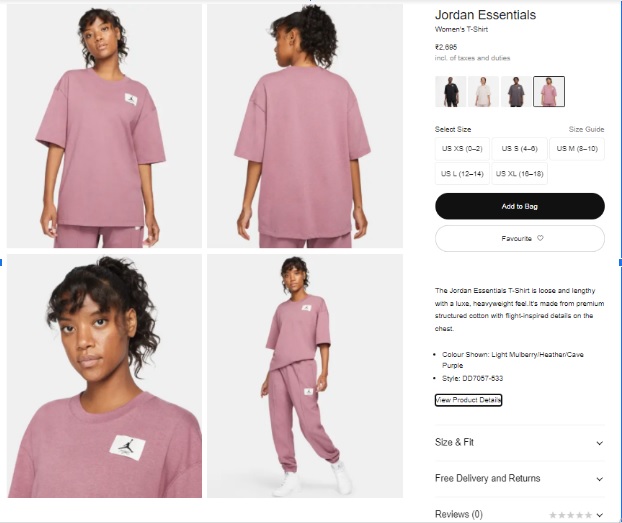
To enhance the customer experience, the website shows a grid of four or more images, providing a 360-degree view to consumers. At a glance, customers get to see the product from all angles. They don’t just stop there and provide viewers a chance to change the size and then analyze the product from a new perspective.
You will get to see everything on one page including discounts and offers, reviews, and much more. When you want to expand the details of products, a new page opens and provides you with the required information related to the fabric, color, style, and benefits of the product. It is an amazing example of how you need to design the product pages in a Fashion eCommerce Store but often retailers miss out on this feature and experience lower conversion rates.
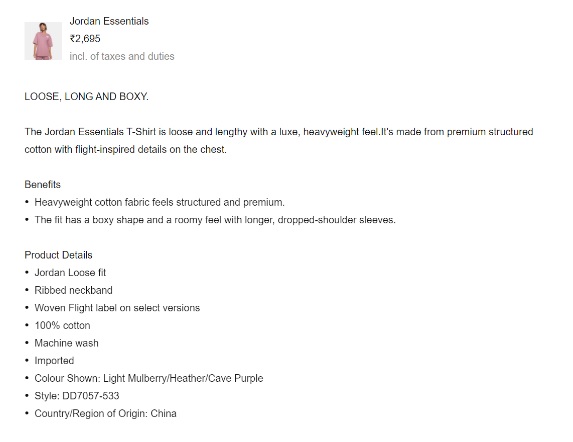
2. The Need for Speed
After Google’s core web vital update, speed is one of the most important factors that retailers need to focus on while setting up an experience online. Even a second’s delay in page response time can bring down the conversion rate of your online store by 7%. Thus, the fashion eCommerce retailers who miss out on optimizing the speed of their stores will definitely lag behind their competitors in terms of visibility, conversion rates, and sales.
Because fashion consumers seek fast loading, personalized, and engaging shopping experiences, retailers need to invest in website speed optimization to make sure their website visitors are happy. Those who embrace speed today will find their business at the forefront of the highly competitive fashion eCommerce race tomorrow.
Have a look at the performance test of one of the world’s leading eCommerce retailers, Amazon using the PageSpeed Insights tool by Google.

Delivering such an instant and robust experience requires modern technological solutions for things like predictive prefetching and advanced caching. Online store speed is a full-stack problem and its solution depends on several things like the server, CDN, and browser. Thus, you need a solution that optimizes all layers and provides you with a lightning-fast fashion eCommerce store.
There are two easy ways to improve your online store’s speed:
- Switch to Headless Commerce
- Develop a Progressive Web App
3. Size Recommendation Engine
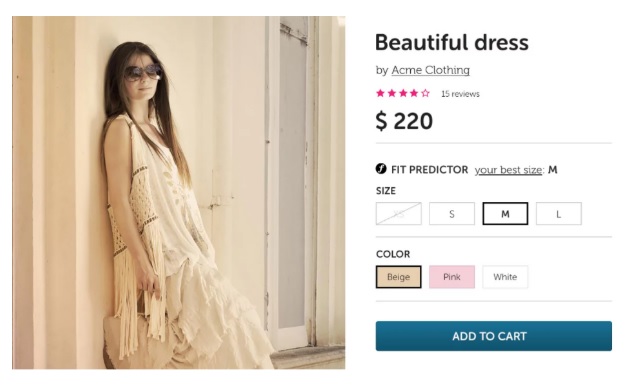
Generally, clothing products come in several catalog sizes and the size charts of every brand are different. A customer might fit in size Medium of one brand and size Large of another brand. That’s why the size recommendation engine is crucial for fashion eCommerce stores that mainly offer clothing products.
It is a type of recommendation engine that suggests properly fitting apparel and clothing after analyzing customer behavior depending on previous purchases. It can detect a shopper’s shape, height, and weight to recommend perfect sizes and expedite the shopping process.
4. Advanced Search Capabilities
Online shopping is often associated with entertainment and fun. In fact, a lot of consumers visit the Fashion eCommerce Websites just to check out new products in their free time and they may not always have an intention to buy your products. But, their interest in buying products grows when they find search results matching their queries or needs.
That’s where advanced search capabilities can help retailers. To find the products they are looking for, your website visitors may:
- Use several labels and filters
- Search products using images
- Expect a search bar that auto-completes their search query
To provide them with accurate results every time they enter a query, you need to implement advanced search capabilities in your Fashion eCommerce Store. For example, if a customer types a brand’s name in a search query and then further tries to narrow down the search by applying filters like price range, size, or color, your website needs to provide accurate results.
Better the search results, better the chances of visitors turning into buyers. To help retailers with implementing advanced search functionality, Adobe Commerce recently launched an AI-powered feature called live search, that provides search-as-you-type results to enhance the CX.
5. AR-Powered Virtual Try Ons
While big fashion eCommerce brands are already using Augmented Reality to enhance their online store experience, it is a new trend for many. Using AR, you can give your users a chance to try your products virtually without leaving the comfort of their homes and this feature can prove to be a win-win for retailers.
The brands that are already leveraging AR to provide a physical store-like experience are already winning their commerce game. For example, Gucci released a new feature in its app where consumers can take a look at how a pair of shoes will look on them by just pointing the camera towards their feet.
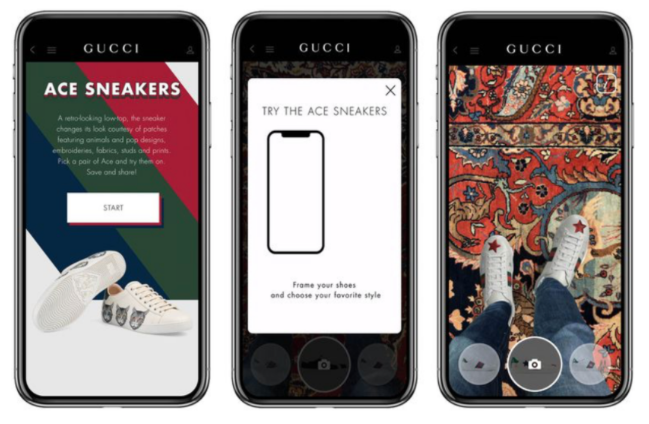
Conclusion
In this blog, we mentioned a few Fashion eCommerce Features that can help you stand out in the market by setting up a great customer experience for your shoppers. You can stretch this list as much as you want but all you need to ensure is a great experience and not a cluttered website structure.
If you are on the lookout for Fashion eCommerce Developers to kickstart your venture or revamp your Fashion eCommerce Strategy, get in touch with our team and we would be more than happy to assist you!
Download Blog














